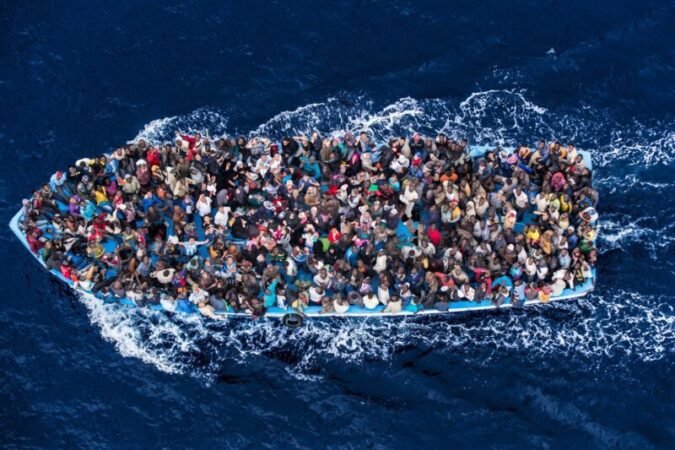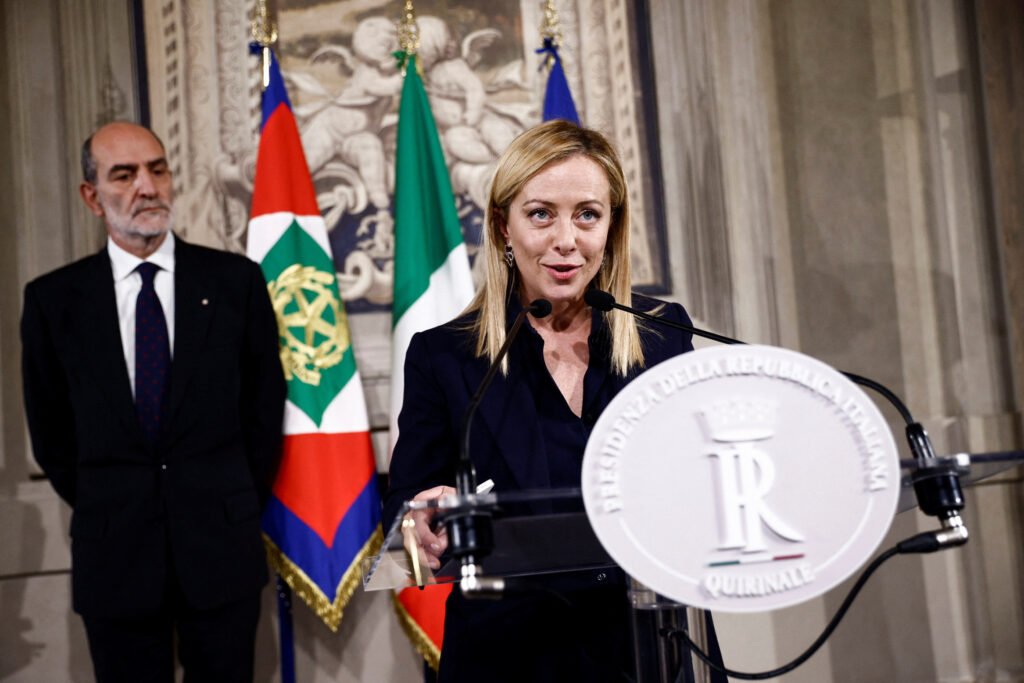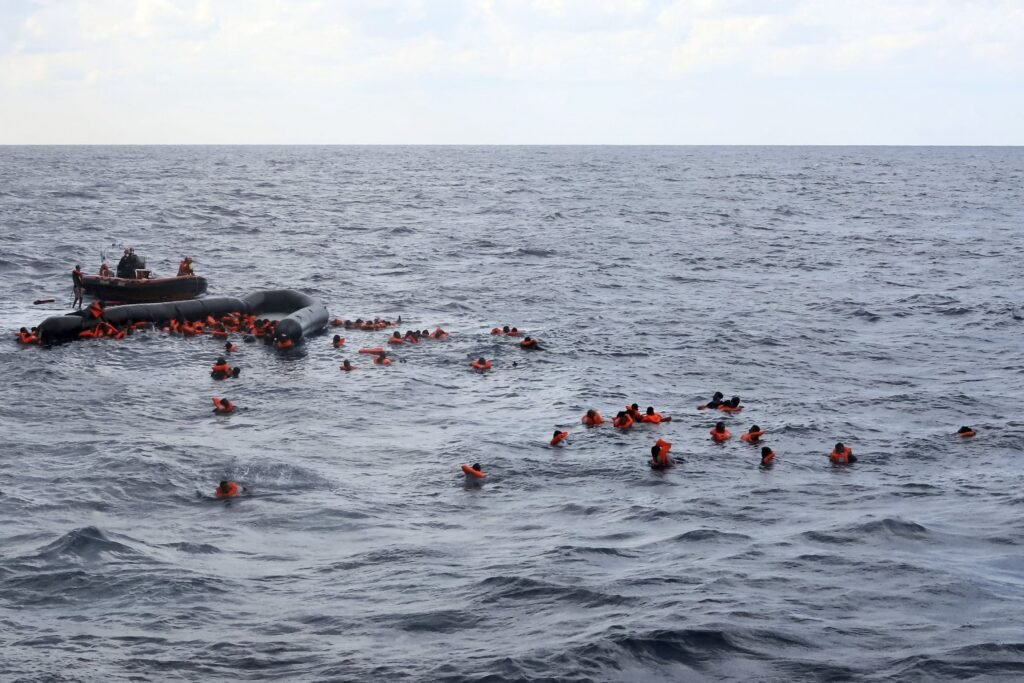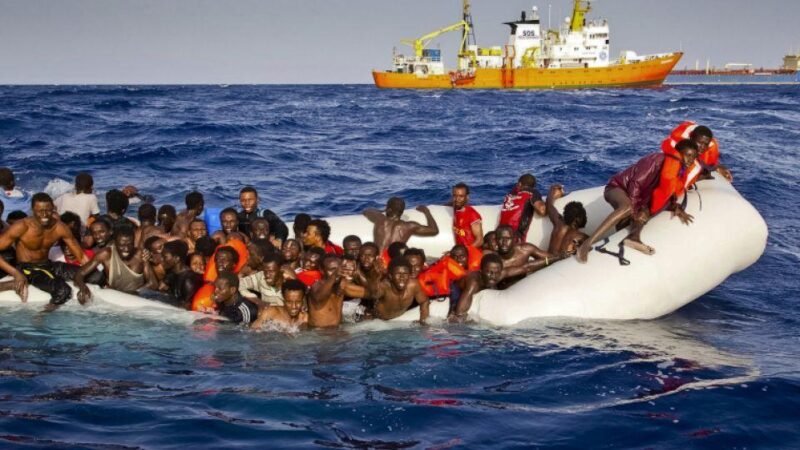What’s behind Italy’s migrant sea rescue standoff

Italy’s new far-right-led government has blocked humanitarian rescue ships from accessing its ports, resulting in a standoff with charities that patrol the deadly central Mediterranean, rescuing people in trouble at sea.
Nongovernmental organizations, as well as human rights and international law experts, say vessels are legally required to rescue people in distress and coastal nations are required to provide a place of safety for them to disembark. Italy claims the flag countries of the ships are responsible for taking on the migrants and that charity vessels just encourage people-smuggling.
Here are some of the issues behind the standoff:
What is going on now in the Mediterranean?
Two charity rescue boats that entered Italian waters this weekend were directed to the Sicilian port of Catania, where Italian authorities allowed the disembarkation only of migrants it deemed vulnerable — families with children, unaccompanied minors and people needing medical care.
Those boats are now refusing to leave until the rest of the migrants are allowed to get off as well, but Italy is not budging. A third charity ship, carrying 89 people rescued at sea, unloaded all of the people it rescued in Calabria on Tuesday. The reason for the different treatment was not immediately apparent. A fourth boat remains in international waters for the 17th day with 234 people on board, it’s requests for a safe port unanswered.

What is Italy’s far-right-led government saying about rescues?
Italy says it is not responsible for taking on migrants rescued by charity rescue ships. It says that responsibility falls to the countries whose flag the ships fly. Italian Interior Minister Matteo Piantedosi described the ships as “islands” and anyone on them as falling under the jurisdiction of the flag countries.
Humanitarian groups, maritime legal experts and human rights activists all reject that interpretation of a flag state’s jurisdiction.
Italy’s new far-right-led government paved the way to closing its ports to private rescue ships by telling port authorities that two of the ships — the Ocean Viking and the Humanity 1 — did not follow European norms while carrying out rescues. Piantedosi claimed they did not await instruction by search and rescue authorities.
The groups have denied the claim, saying they followed correct protocols to inform the authorities — in Italy, Malta or Libya, depending on the search-and-rescue area — once a boat in difficulty has been identified. Often, they say, national authorities never answer their calls for help.
How have past Italian governments handled rescues at sea?
The new government’s confrontational posture is reminiscent of the standoffs orchestrated by Matteo Salvini when he was briefly interior minister from 2018-19.
Salvini’s refusal to open ports resulted in ships having to travel to France or Spain to disembark migrants, adding up to three days to the migrants’ journeys. A German captain, Carola Rackete, famously defied Salvini and entered an Italian port despite orders not to, citing an emergency situation on board.
Salvini, who is infrastructure minister in charge of ports in the new government, is facing trial on charges of kidnapping for refusing to let the Spanish migrant rescue ship Open Arms dock in an Italian port in 2019. Another case against him has been dismissed.
Other Italian governments have delayed ships’ arrivals to get agreements with other European Union countries to take migrants before they land, or conducted inspections that the charity groups argue seek to prevent them from conducting rescues.

What does International Law say?
Article 98 of the United Nations Convention on the Law of the Sea requires every shipmaster “to render assistance to any person found at sea in danger of being lost.” Charity ships say rescuing migrants from flimsy, unseaworthy smuggling boats, or in many cases straight from the water, is their legal obligation.
International Maritime Law also requires coastal states to run adequate search and rescue services, including by cooperating with other nations in the same region during rescues.
Rescues are only considered complete after survivors are disembarked to the nearest place of safety, to be assigned by the maritime authority in charge of search-and-rescue coordination. But NGOs say their requests for a place of safety in the Mediterranean Sea are increasingly delayed, ignored or denied by both Italy and Malta.
What’s the problem with Libya?
Libya, with European support, is responsible for a massive search-and-rescue area in the Central Mediterranean since 2018. But human rights activists and maritime law experts say the war-torn country – currently lacking a central government- cannot adequately and safely perform search and rescue missions. People smugglers have also been linked to members of the Libyan coast guard in charge of interceptions at sea.
U.N. agencies say that Libya cannot be considered a “place of safety” for the disembarkation of people rescued at sea, due to the inhumane conditions at the detention centers they are returned to. Many migrants and refugees have spoken of enduring horrific abuses in Libya, including beatings, rape and killings. Despite millions spent by the EU to improve conditions, little has changed.

How many migrants have NGO vessels rescued?
The International Organization for Migration says charity ship rescues accounted for only 15% of the 88,000 migrants who have reached Italy by sea so far this year. Most arrived on their own, or were rescued by the Italian Coast Guard or other national rescue ships.
But many don’t survive the dangerous crossing, with some 1,300 migrants dying or missing in the Central Mediterranean this year, according to the IOM’s missing migrants project.
Although the number of arrivals is far below the peak of 2016 when 180,000 people arrived on Italian shores, the death rate remains high.
Non-governmental groups say they are needed in the Mediterranean, the deadliest known migration route in the world, to fill the rescue gap left by European countries who have increasingly relied on North African nations to stop migrants from crossing.



















